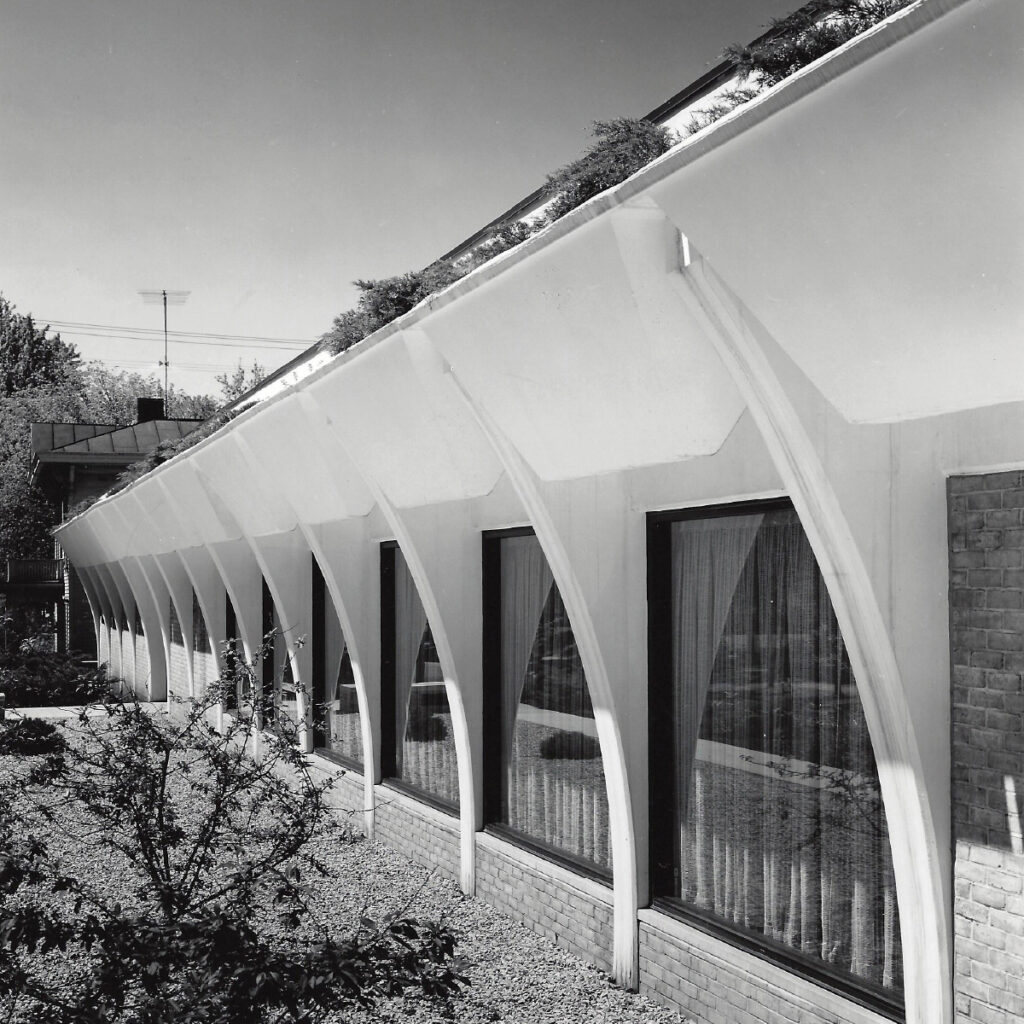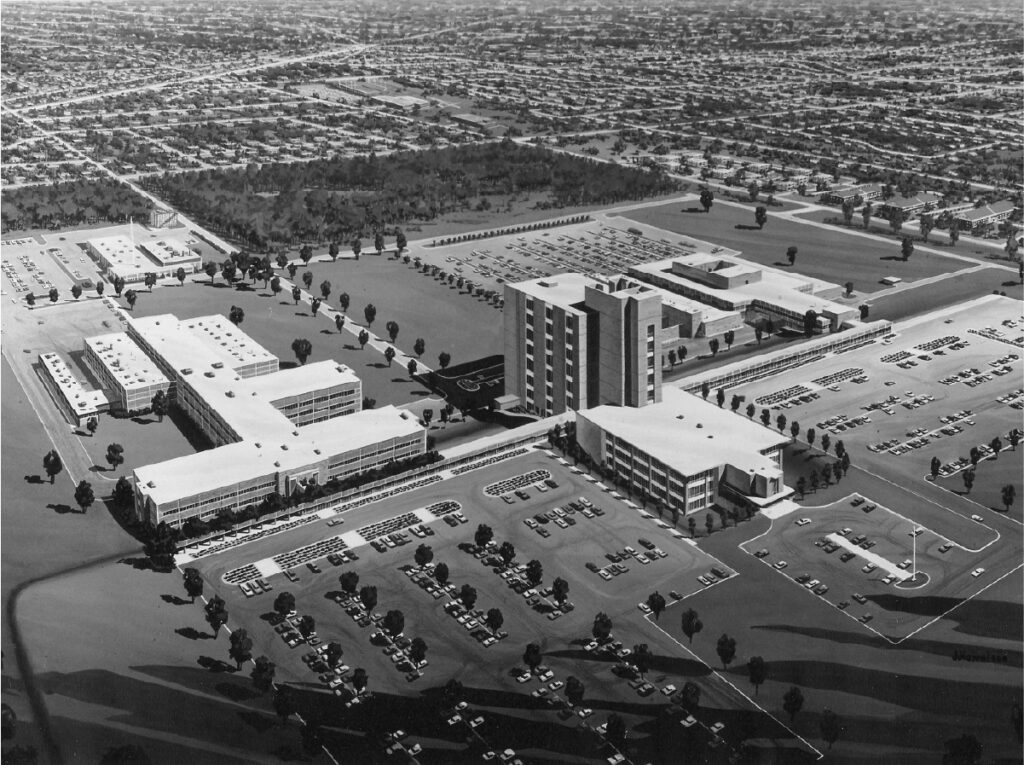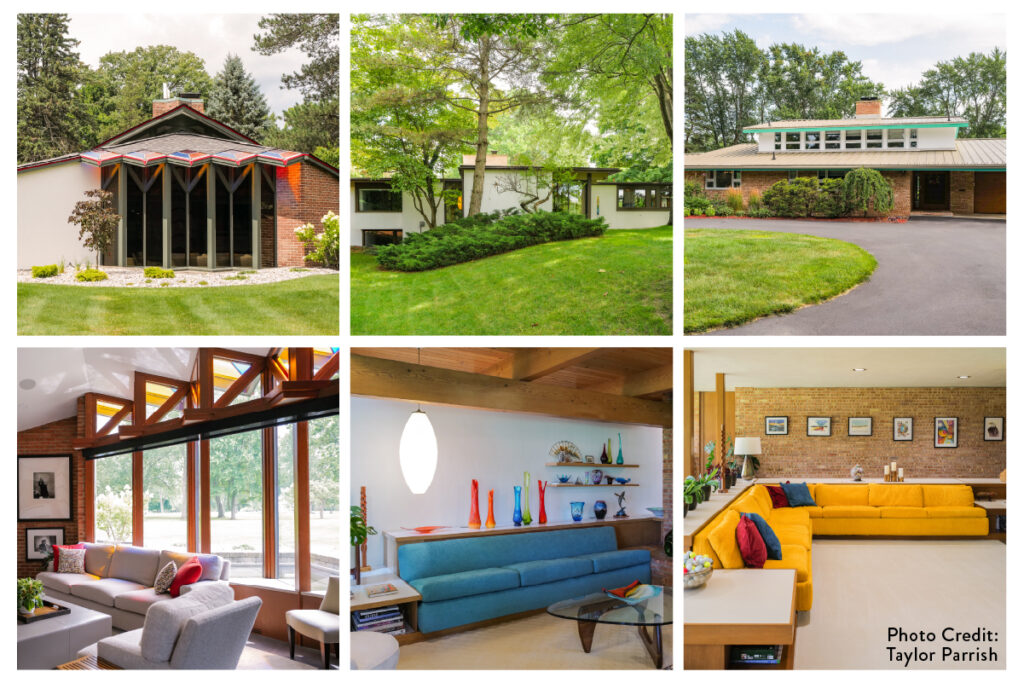Projects
Northern Michigan University Learning Resources Center
Location: Marquette, Michigan Architect: Alden B. Dow Throughout his long career, Alden B. Dow designed close to 80 educational structures, from pre- and elementary schools to entire college campuses. In Michigan and elsewhere, the 1960’s brought enrollment...
Saginaw YWCA by Alden B. Dow
Location: Saginaw, MichiganArchitect: Alden B. Dow In July 1963, Alden B. Dow began the first drawings for a new building for the Young Women’s Christian Association in Saginaw on South Jefferson Avenue. The Association had been housed in various temporary...
Dow Chemical Company Sales Office, St. Louis, Missouri
Location: St. Louis, Missouri Architect: Alden B. Dow When the St. Louis branch office of the Dow Chemical Company needed to move to larger quarters, it leased the entire 18th floor of the Continental Building, the newest high-rise in the city’s central business...
Temple Beth El by Alden B. Dow
Location: Spring Valley, New York Architect: Alden B. Dow Temple Beth El in Spring Valley, New York, is one of two Jewish temples designed by Alden B. Dow and his only built structure in that state. He designed the Bay City Jewish Center in 1955, and a brief letter...
Abbott Road Center by Alden B. Dow
Location: Midland, MIArchitect: Alden B. Dow During the 1950’s and 1960’s Alden B. Dow designed four major structures for the Dow Chemical Company that were collectively known as the Abbott Road Center. The 160-acre site was bounded by Abbott Road, Patrick Road,...
The Dow Chemical Company 47 Building Addition
From the beginning of his career in the 1930’s and into the 1960’s, Alden B. Dow designed over 30 projects for the Dow Chemical Company. One of his earliest was to connect and remodel what were the two main buildings that housed the growing firm – the office...
Hidden Treasures Tour 2024
The Alden B. Dow Home & Studio and Mid-Century Modern Midland are pleased to announce the Hidden Treasures Tour. This event will feature three homes that epitomize the quality, diversity and beauty of Midland’s Mid-Century Modern architectural heritage. Each of...
Hillsdale College Nursery by Alden B. Dow
By the time Alden B. Dow began the drawings for the Hillsdale College Nursery, he had already outlined the campus master plan in 1959 and had designed several other buildings for the school, including the Strosacker Science Center, student center, dining hall and...
Earl W. Bennett Cottage by Alden B. Dow
Earl W. Bennett, the father of Vada Bennett Dow, was known as the “financial wizard” of the Dow Chemical Company. He joined the then three-year old company in 1900 as one of 33 employees and a short time later became its official bookkeeper and then auditor. As...
The Dunbar Community Center by Alden B. Dow
The Dunbar Community Center was founded in 1923 in Ann Arbor by the Rev. R.M. Gilbert of the Second Baptist Church. Named for the noted Black poet Paul Laurence Dunbar, it was a vibrant gathering place for the predominantly Black community in which it was located,...











